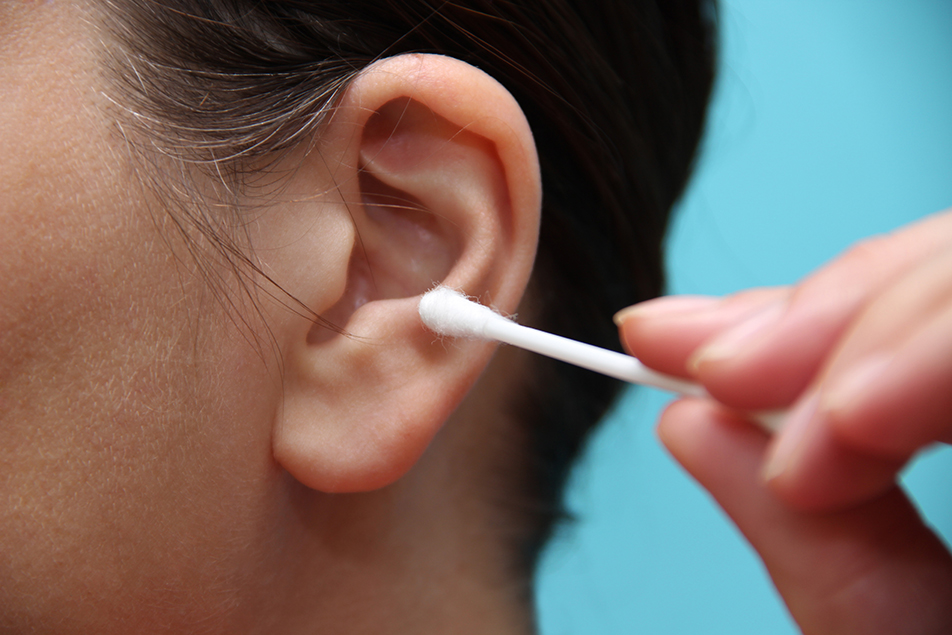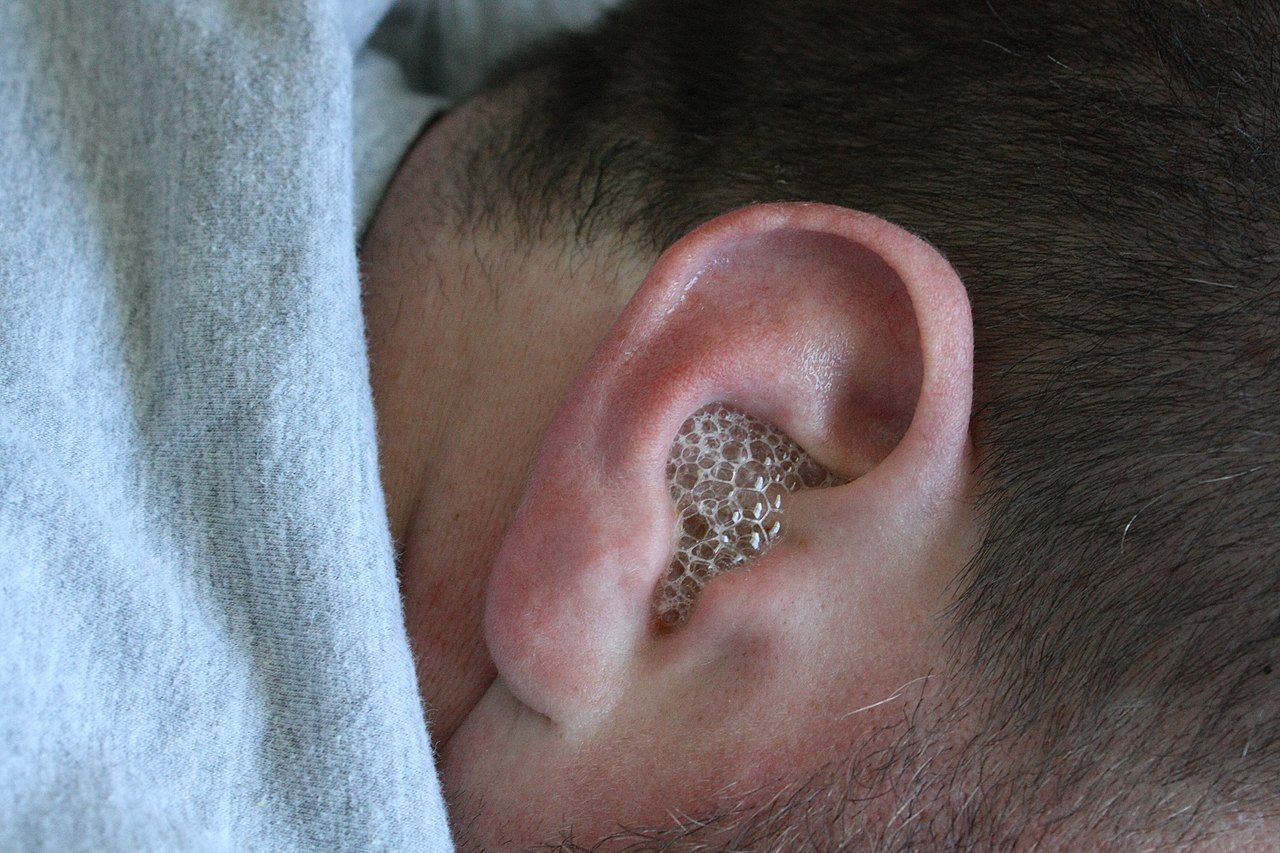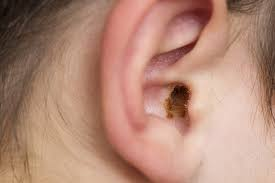Table of Contents
Exercise Daily – Ear wax, medically known as cerumen, is a natural substance produced by the glands in our ear canal. It plays a vital role in protecting the ear by trapping dirt, dust, and foreign particles. However, excessive ear wax accumulation and buildup can lead to blocked ears, causing discomfort and hearing problems. Let’s see the natural solutions for Colace ear wax removal and effectively clearing blocked ears.
Maintaining ear hygiene is essential for good auditory health. When ear wax accumulates, it can cause various issues such as reduced hearing, earaches, tinnitus, and dizziness. While there are several methods available for ear wax removal, many people prefer natural solutions due to their safety, effectiveness, and affordability.
A randomized clinical trial was conducted to investigate the effectiveness of natural solutions for Colace ear wax removal and clearing blocked ears. The study aimed to evaluate these natural remedies in comparison to traditional clinical methods. These findings highlight the potential of natural remedies to serve as a safe and effective alternative to the most common clinical practice for ear wax removal, offering patients a gentler and more holistic approach to clearing their blocked ears.

Understanding Ear Wax
Ear wax is a waxy substance produced by the ceruminous glands in the ear canal. It consists of a mixture of dead skin cells, oil, and sweat. Despite its reputation as “dirt,” ear wax serves an important purpose in protecting the ear from infection, dryness, and foreign objects. However, sometimes the production of ear wax exceeds the rate at which it naturally migrates out of the ear, leading to blockage.
Signs and Symptoms of Blocked Ears
When excessive ear wax blocks the ear canal, it can result in several noticeable symptoms. These include a decrease in hearing ability, a feeling of fullness or pressure in the ear, earache or discomfort, tinnitus (ringing or buzzing in the ears), and even dizziness or balance problems. If you experience any of these symptoms, it may indicate the need for ear wax removal.
The trial included individuals with complete or partial obstruction of the ear canal, seeking relief in both emergency and outpatient settings. The results revealed a statistically significant difference between the two approaches. Natural solutions demonstrated promising outcomes with minimal adverse effects, such as ear canal bleeding, in contrast to the conventional use of docusate sodium.
Natural Solutions for Colace Ear Wax Removal
1. Gentle Ear Cleaning Practices
Keeping the ears clean is essential, but it should be done with caution to avoid further complications. Here are some gentle ear-cleaning practices:
1. Warm water irrigation
Using warm water for ear irrigation can help soften the wax and facilitate its removal. Gently irrigate the ear by tilting your head and pouring warm water into the ear canal. Allow the water to remain in the ear for a few minutes before draining it out. Be sure to use clean, filtered water at a comfortable temperature.
2. Saline solution drops
Saline solution drops can also aid in ear wax removal. Mix a teaspoon of salt in half a cup of warm water until dissolved. Using a clean dropper, instill a few drops into the affected ear. Tilt your head and let the solution rest in the ear for a few minutes before draining.

Natural Ear Wax Softeners
Certain substances can help soften hardened ear wax, making it easier to remove. Here are two natural ear wax softeners:
1. Olive oil
Olive oil is a commonly used home remedy for softening ear wax. Here’s how you can use it:
- Warm a small amount of olive oil.
- Lie down on your side with the affected ear facing upward.
- Using a dropper, carefully place a few drops of warm olive oil into the ear canal.
- Stay in the same position for 5-10 minutes to allow the oil to reach the wax.
- Tilt your head or use a cotton ball to gently wipe away any excess oil.
Olive oil helps soften the ear wax, making it easier to come out naturally. It also has moisturizing properties that soothe the ear canal.
Warm a small amount of olive oil and, using a dropper, instill a few drops into the affected ear. Allow the oil to sit for a few minutes to soften the wax. Tilt your head and let the oil drain out naturally.
2. Hydrogen peroxide
Hydrogen peroxide is another effective natural remedy for ear wax removal. Follow these steps to use it safely:
- Dilute hydrogen peroxide with equal parts of water.
- Lie down on your side with the affected ear facing upward.
- Use a dropper to instill a few drops of the diluted hydrogen peroxide into the ear canal.
- Allow it to sit for a few minutes to bubble and break down the wax.
- Tilt your head or use a cotton ball to gently wipe away the loosened wax.
Hydrogen peroxide helps soften and dislodge ear wax, allowing it to be easily removed. Mix equal parts of hydrogen peroxide and water. Tilt your head and instill a few drops into the ear. Allow the mixture to sit for a few minutes before draining it out.
Home Remedies to Clear Blocked Ears
In addition to ear wax softeners, there are various home remedies that can help clear blocked ears. These include:
1. Valsalva maneuver
The Valsalva maneuver involves closing your mouth and pinching your nose while gently blowing out. This technique helps equalize pressure in the ears and can aid in clearing blocked ears.
2. Jaw movements and chewing
Chewing or moving your jaw in a circular motion can help stimulate the muscles around the ear canal, promoting the natural migration of ear wax.
3. Steam inhalation
Inhaling steam from a bowl of hot water can help loosen ear wax and alleviate blockage. Cover your head with a towel and lean over the bowl, breathing in the steam for several minutes.
Other Home Remedies for Ear Wax Removal
In addition to softening the wax, there are various home remedies available to remove ear wax safely. It’s important to proceed with caution and avoid inserting objects deep into the ear, as it can cause injury or push the wax further.
1. Warm Water Irrigation
Warm water irrigation, also known as ear syringing, can effectively flush out excess ear wax. Here’s how you can do it:
- Fill a rubber bulb syringe or a specialized ear irrigation kit with lukewarm water.
- Tilt your head sideways with the affected ear facing downward.
- Gently insert the tip of the syringe into the ear opening, aiming it slightly upwards.
- Squeeze the bulb or trigger the irrigation kit to release a gentle stream of water into the ear canal.
- Allow the water to flow for a few seconds, then tilt your head to let it drain out.
Warm water irrigation helps dislodge and remove ear wax that has softened due to the previously mentioned remedies.
2. Over-the-Counter Solutions
There are over-the-counter ear drops and wax removal kits available that can aid in the removal of excess ear wax. These products often contain carbamide peroxide or other gentle ear-cleaning solutions. Follow the instructions provided with the product for safe and effective use.
It’s important to note that not all home remedies or over-the-counter solutions may work for everyone. The effectiveness of these methods can vary depending on the individual and the severity of the ear wax buildup. If you experience persistent symptoms or are unsure about the appropriate approach, it’s recommended to consult a healthcare professional for guidance. Is Ear Infection Contagious? Get your Answer.

Over-the-Counter Ear Wax Removal Products
There are various over-the-counter ear wax removal products available that can assist in clearing blocked ears. Two commonly used products are:
1. Colace Ear Wax Removal Drops
Colace ear wax removal drops contain active ingredients that help soften and loosen ear wax. Follow the instructions provided on the packaging for safe and effective use.
2. Ear irrigation kits
Ear irrigation kits are available in many pharmacies and include a bulb syringe or irrigation bottle for gentle flushing of the ear canal. It is important to follow the instructions carefully to avoid any potential harm.
Seeking Professional Help
If the above methods fail to clear the blocked ears or if you experience severe pain or persistent symptoms, it is advisable to seek professional help. Healthcare professionals can perform ear wax removal using specialized tools and techniques, such as:
1. Ear wax removal by a healthcare professional
A healthcare professional, such as an ear, nose, and throat (ENT) specialist or a general practitioner, can safely remove excessive ear wax using instruments like ear curettes or suction devices. They have the expertise to ensure proper and safe ear wax removal.
2. micro-suction or curettage
Microsuction involves using a small suction device to gently remove the ear wax, while curettage involves using a tiny spoon-shaped instrument to scoop out the wax. These procedures are performed by professionals and may require a visit to a clinic or hospital.
Common Causes of Ear Wax Buildup
Several factors can contribute to the excessive accumulation of ear wax. These include:
- Overproduction of ear wax due to genetic factors.
- Narrow or twisted ear canals that impede the natural flow of wax.
- Excessive use of earplugs, hearing aids, or earphones.
- Improper cleaning practices, such as using cotton swabs that push the wax deeper into the ear canal.
Why Remove Ear Wax?
While ear wax is generally harmless, an excessive buildup can lead to several uncomfortable symptoms and potential complications.
1. Symptoms of Excessive Ear Wax
When ear wax accumulates beyond normal levels, it can cause various symptoms, including:
- Earache or ear pain
- The feeling of fullness or blockage in the ear
- Reduced hearing or temporary hearing loss
- Tinnitus (ringing or buzzing in the ear)
- Itching or irritation in the ear canal
- Dizziness or vertigo
2. Potential Complications
If left untreated, excessive ear wax can lead to complications such as:
- Impacted ear wax: When the wax hardens and blocks the ear canal completely, it can cause severe pain, further hearing loss, and an increased risk of ear infections.
- Ear infections: Excess ear wax can create a favorable environment for the growth of bacteria, increasing the likelihood of developing ear infections.
- Eardrum damage: Forceful attempts to remove ear wax using sharp objects or improper techniques can potentially damage the delicate eardrum.
Tips for Cleaning Children’s Ears
When it comes to cleaning children’s ears, it’s essential to adopt safe and gentle methods. Here are some tips to ensure effective and safe ear cleaning:
- Use of warm water and mild soap: For routine cleaning, simply use a washcloth or cotton ball soaked in warm water and mild soap. Gently wipe the outer ear and the area around the ear canal.
- Drying ears properly: After bathing or swimming, ensure that your child’s ears are dried thoroughly. Excess moisture can create a favorable environment for bacterial growth.
- Using a washcloth or towel: Instead of inserting objects into the ear canal, use a washcloth or towel to clean the external part of the ear. Remember to be gentle and avoid any aggressive movements.
Managing Ear Wax Buildup
Ear wax, also known as cerumen, is a natural substance produced by the ear to protect it from foreign particles and infections. However, excessive ear wax buildup can lead to discomfort, hearing difficulties, and even ear infections. Here’s what you should know about managing ear wax in children:
- Understanding the purpose of ear wax: Explain to your child that ear wax is a normal and essential part of the ear’s defense mechanism. It traps dirt, dust, and bacteria, preventing them from reaching the delicate parts of the ear.
- Signs of excessive ear wax: Pay attention to signs such as earache, ear fullness, decreased hearing, or persistent itching. These may indicate an excessive buildup of ear wax.
- Safe methods for ear wax removal: If your child is experiencing discomfort due to ear wax buildup, consult a healthcare professional. They can recommend safe methods for removal, such as using wax softening drops or irrigation under professional supervision.
Promoting Healthy Ear Care Habits
Apart from regular cleaning and managing ear wax, instilling healthy ear care habits in children can go a long way in maintaining optimal ear health. Here are some practices to promote:
- Encouraging regular check-ups: Schedule regular appointments with a healthcare professional who can assess your child’s ear health and identify any potential issues early on.
- Protecting ears during water activities: Whether it’s swimming or bathing, ensure your child’s ears are protected from excessive water exposure. Use earplugs or a swim cap with ear flaps to prevent water from entering the ear canal.
- Avoiding exposure to loud noises: Prolonged exposure to loud noises can damage the delicate structures of the ear. Encourage your child to limit exposure to loud music, use ear protection in noisy environments, and keep the volume at a reasonable level when using headphones or earphones.
Identifying Ear Problems
Despite taking preventive measures, children may still experience ear problems. Understanding the common issues and their signs can help you identify when it’s necessary to seek medical attention. Here are some common ear problems in children:
- Ear infections: Ear infections are common in children, especially those between the ages of 6 months and 2 years. Look out for symptoms like ear pain, fever, irritability, difficulty sleeping, or pulling at the ears.
- Hearing loss: Hearing loss can occur due to various factors, including infections, blockages, or structural abnormalities. If you notice your child having trouble hearing or responding to sounds, it’s crucial to consult a healthcare professional for a thorough evaluation.
- When to consult a healthcare professional: If you suspect any ear-related issues or notice persistent symptoms, it’s best to consult a healthcare professional. They can diagnose the problem accurately and provide appropriate treatment. How to Get Rid of Pimple in Ear? Get the best Solution.
Precautions and Considerations
While natural and home remedies can be useful for managing ear wax, it’s essential to take certain precautions and consider specific factors for safe and effective earwax removal.
1. When to Seek Medical Help
In some cases, it’s best to seek medical assistance for ear wax removal. Consult a healthcare professional if you experience:
- Severe pain or discomfort
- Bleeding from the ear
- Drainage or discharge from the ear
- Complete hearing loss
- Tinnitus that persists or worsens
- A history of ear problems or ear surgeries
2. Tips for Safe Ear Wax Removal
When attempting ear wax removal at home, keep the following tips in mind:
- Avoid inserting cotton swabs or other objects deep into the ear canal, as it can push the wax further or cause damage.
- Do not attempt ear wax removal if you have a perforated eardrum or a history of ear surgeries.
- Use only approved ear drops, solutions, or irrigation kits specifically designed for ear wax removal.
- Follow the instructions provided with the products and consult a healthcare professional if unsure.
- If symptoms persist or worsen after using home remedies, seek medical advice.
Ear Wax: Nature’s Protective Agent
Ear wax, scientifically known as cerumen, is a natural substance produced by glands in the ear canal. It serves a vital role in safeguarding the ear canal by effectively trapping dirt, dust, and other foreign particles. This function acts as a shield, preventing these particles from reaching the delicate structures within the ear. Furthermore, ear wax exhibits antimicrobial properties that aid in maintaining cleanliness and fending off potential infections.
The Self-Regulating Process of Ear Wax Production
In normal circumstances, the production of ear wax is a self-regulating process. The wax gradually migrates from the ear canal towards the outer ear, carrying along any accumulated debris. As a result, the ear wax typically does not pose any problems and is naturally expelled from the ear.
When Accumulation Becomes a Concern
However, certain circumstances can lead to the accumulation and build-up of ear wax over time. Factors such as the shape of the ear canal, usage of hearing aids or earplugs, or excessive production of wax can contribute to this issue. When the wax reaches a significant level of accumulation, it can cause a blockage within the ear canal.
The Consequences of a Blocked Ear Canal
A blocked ear canal can give rise to various complications, including hearing problems. The blockage hinders sound waves from reaching the eardrum effectively, resulting in diminished hearing capabilities. This becomes particularly problematic for athletes, as clear communication plays a crucial role in sports. When an athlete’s ear canal is obstructed by wax, it becomes challenging to hear instructions from coaches or teammates during training or competition, potentially impacting performance.
Seeking Professional Assistance for Excessive Ear Wax
Individuals experiencing excessive ear wax buildup should consult a healthcare provider, such as a doctor or an ear, nose, and throat specialist. These professionals can examine the ear and determine the most suitable course of action. Treatment options may include ear irrigation, where warm water is used to flush out the wax, or the use of wax-softening drops to facilitate its removal.
Caution Against Home Removal Methods
It’s important to note that attempting to remove ear wax at home using objects like cotton swabs or sharp instruments is dangerous and strongly discouraged. These items can push the wax further into the ear canal, potentially causing injury or damage. Therefore, it is always advisable to consult a healthcare professional for proper evaluation and management of ear wax-related issues.
Conclusion
Proper ear wax removal is essential for maintaining good ear health and preventing discomfort and hearing problems. Natural solutions such as gentle ear cleaning practices, ear wax softeners, home remedies, and over-the-counter products like Colace ear wax removal drops can effectively help in clearing blocked ears. However, if symptoms persist or worsen, it is important to consult a healthcare professional for appropriate guidance and care.
FAQs – Colace Ear Wax Removal
Can ear wax removal cause damage to the ear canal?
Ear wax removal, when done correctly, should not cause damage to the ear or external auditory canal. It is important to follow safe practices and avoid inserting objects deep into the ear. Seeking professional help can ensure the proper and safe removal of excessive ear wax.
How often should I clean my ears?
Ear cleaning should be done as needed. For most people, the ears are self-cleaning, and excessive wax should naturally migrate out of the ear. It is generally recommended to avoid frequent or excessive cleaning, as it can disrupt the ear’s natural balance.
Are there any natural remedies for preventing excessive ear wax buildup?
While there is no guaranteed way to dissolve ear wax or prevent excessive ear wax buildup, certain practices may help. These include maintaining good ear hygiene, avoiding the use of cotton swabs, and following a balanced diet rich in omega-3 fatty acids, which may support ear health.
Is it safe to use hydrogen peroxide for ear wax removal?
Hydrogen peroxide can be used for ear wax removal, but it should be used with caution. It is important to dilute hydrogen peroxide with water and follow the instructions carefully. If you have any concerns or doubts, it is best to consult a healthcare professional.
What should I do if my ears remain blocked after trying home remedies?
If your ears remain blocked after trying home remedies, it is advisable to seek medical advice. A healthcare professional can assess your condition, determine the cause of the blockage, and provide appropriate treatment options tailored to your specific needs.
Can ear candles remove ear wax effectively?
Ear candles are not recommended for ear wax removal. They can pose risks, such as burns or injuries, and there’s no scientific evidence to support their effectiveness.
Are cotton swabs safe for ear wax removal?
Cotton swabs should not be inserted deep into the ear canal for wax removal. They can push the wax further, potentially causing damage to the ear canal or eardrum.
Is it normal for ear wax to have a foul smell?
Ear wax typically has a mild odor. However, if you notice a strong, unpleasant smell or discharge from the ear, it may indicate an infection or other underlying issue. Consult a healthcare professional for evaluation.
Can ear wax removal cause damage to the ear?
Improper ear wax removal techniques, such as using sharp objects or excessive force, can cause damage to the ear canal or eardrum. It’s best to seek professional guidance or use safe and gentle methods for ear wax removal.





